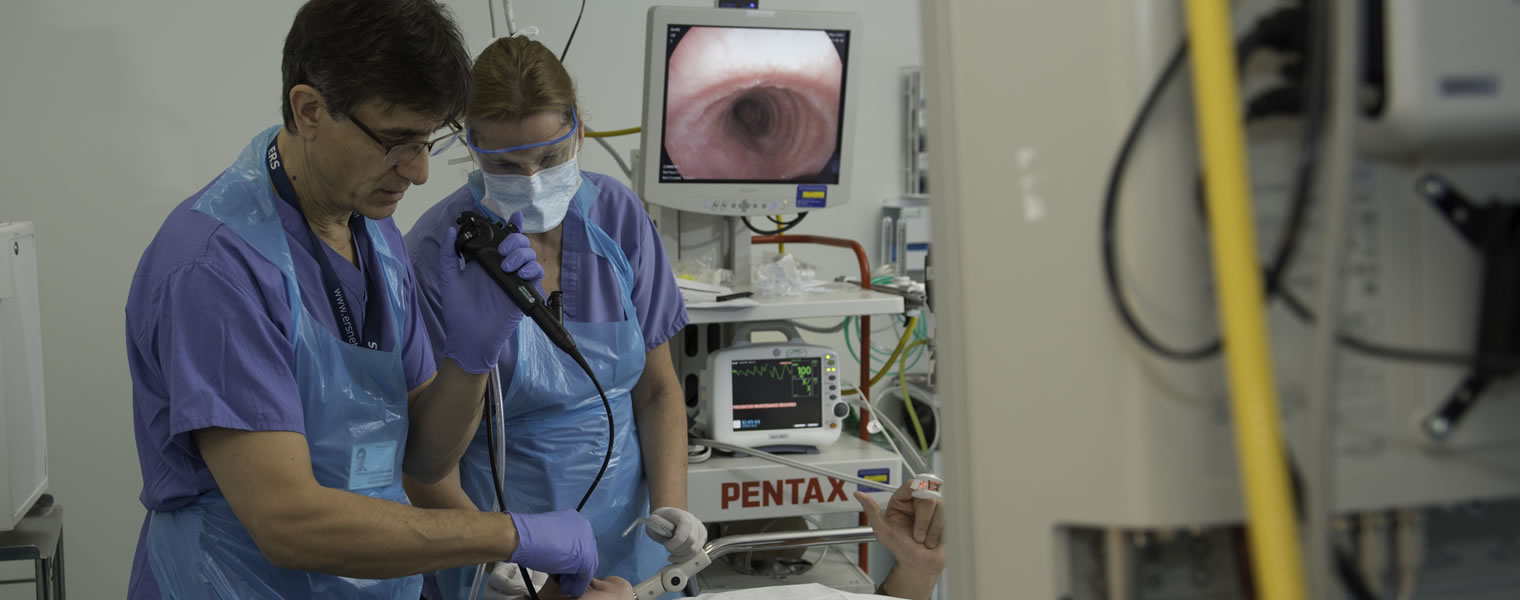Hartley News Online Your alumni and supporter magazine
The University has an international reputation for its research into respiratory disease, which ranges from lab-based investigations through to clinical studies in patients.
John Holloway (visiting PhD student, 1994–95; PG Cert (Academic Practice, 2006)), Professor of Allergy and Respiratory Genetics explains how this research is benefiting people with asthma – a potentially life-threatening condition that affects 5.4 million people in the UK.
Southampton’s standing as a centre of excellence in respiratory disease and allergy research is founded on decades of discovery and innovation. Professor Stephen Holgate (DSc, 1991), was the driving force behind this area of expertise and his work led to a number of significant breakthroughs. In the 1980s his team was the first to establish a connection between the common cold virus and asthma attacks, for example; later he identified the first gene linked to asthma susceptibility, a project I had the privilege of working on as a postdoctoral researcher.
Our scientists and clinicians continue to investigate the biological and environmental factors that contribute to asthma, with a view to gaining a greater insight into the condition and finding targets for new therapies.
Epigenetics and asthma
My own research centres on a phenomenon called epigenetics to find out how it affects people’s susceptibility to allergies, asthma and other respiratory diseases. I’ve always been fascinated by genetics and the way differences in our DNA might determine our risk of disease. I come from New Zealand where there was an epidemic of deaths from asthma in the 1980s; it seemed fitting to apply my interest in genetics to the study of this particular problem.
Epigenetics is the study of chemical changes to DNA that don’t alter the genetic code itself but can modify the way the gene is expressed (the way cells ‘read’ the gene’s instructions). What’s interesting about these chemical changes, known as epigenetic marks, is that they can be added to your DNA in response to exposure to a particular environment. For example, your mother’s diet when you were in the womb or the presence of cigarette smoke in the air you breathe can lead to a chemical change in your DNA that modifies the way your genes are expressed. This in turn can alter your risk of developing conditions such as asthma.
Another fascinating thing about epigenetics is that epigenetic marks may actually be passed on from parent to child, so environmental exposure in one generation could lead to a change in DNA that is then passed down to subsequent generations.
In collaboration with colleagues at Southampton and in the United States, I’ve been studying epigenetic marks in the DNA of a cohort of individuals on the Isle of Wight. The cohort is a unique resource for this type of research. Established in 1989 by Professor Hasan Arshad, Professor of Allergy and Clinical Immunology, it is the longest running birth cohort for allergic disease in the world.
We have followed up the cohort over time to look at the epigenetic changes to participants’ DNA and see whether these relate to the development of allergic diseases such as asthma. What’s great is that we are now also able to study the DNA of babies born to members of the original cohort, so we can look at epigenetic changes in relation to the environments their parents and grandparents were exposed to.
Our ultimate aim is to find out how genes and the environment interact to determine people’s risk of developing diseases such as asthma. This could lead to the development of new therapies or measures to reduce the environmental risks. We may also be able to predict who will develop asthma in order to target future preventative treatments.
Turning discoveries into treatments
Another key resource for our researchers in this field is the National Institute for Health Research Southampton Respiratory Biomedical Research Unit, which is run jointly by the University and the University Hospital Southampton NHS Foundation Trust.
It provides a fantastic facility for my clinical colleagues to work directly with patients to translate laboratory discoveries into new treatments, often working in collaboration with pharmaceutical industry partners. For example, the unit facilitated trials of a novel treatment, inhaled interferon beta. This works by replacing an antiviral protein that is under-produced in the lungs of people with asthma, helping to reduce the risk of asthma attacks being triggered by a viral infection.
Following successful trials, a University spin-out company, Synairgen, was formed to license the drug and make it available to patients. Some of the first patient trials of another asthma drug, a monoclonal antibody therapy known as omalizumab, were also conducted at the unit, providing evidence for the new drug’s registration.
It is the combination of these superb facilities, world-leading expertise and the willingness of colleagues from different disciplines to join forces to solve a particular problem that makes Southampton such a great place to conduct research in this field. Working across disciplines is essential; we need to pool the knowledge of clinicians, geneticists, statisticians, epidemiologists and informaticians if we are to tackle these major health challenges.
Have your say
The poll in this article is optional and anonymous. The polls are covered by Ethics 17326.




